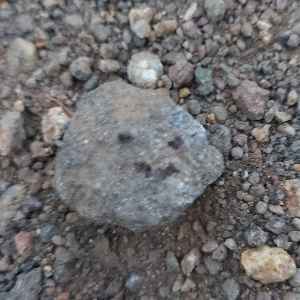Is it only ornamental? And why are they usually webbed feet (or at least they are in my experience)?
Cuz looks cool
People used to take pride in their work, and there was a time when consumers valued quality over price point.
You’re never going to walk into a charity shop and find a 100 year old chipboard IKEA wardrobe. Shit is literally made to fall apart and have to be re-bought.
The average worker wasn’t buying a table with carved feet 100 years ago. You’re experiencing survivorship bias.
I don’t know. IKEA makes some great shit. They’re not the problem imo, Wayfair and other crap is far worse
It totally depends what you buy. IKEA definitely does sell crap, so does every other furniture chain store, but not everything is crap. Really depends on what you look at specifically.
Because it’s cool.
It’s known that the more wealth you acquire, the stronger your foot fetish becomes.
It’s known.
Not a problem, just cast yourself in a movie if you have the urge to suck toes (or say the n word).
My n Tarantino
Because it hurts less when you hit your foot against it when going to the toilet during the night
Because look at those cute little footsies
Okay so there are layers to this question:
Why does antique furniture usually have carved feet?
First, antique furniture tends to be the fancy stuff for rich people. Modest furniture made out of a few boards for the unwashed masses usually isn’t considered for preservation, but the fancy shit rich people bought got kept.
Rich people tend to like to show off how rich they are. And one way to do that up until fairly recently was through furniture. Maybe you use exotic wood, but even if you don’t do that you pay a woodworker to waste his life carving useless intricate details like pineapple newel posts or ornate table legs.
The claw-clutching-a-ball design apparently comes from China, it’s supposed to be a dragon’s foot clutching a jewel. The British adopted it in the Queen Anne period because it’s ornate, fancy and
foreignexotic. Rich people get to brag that they got their table, or a taste for the style, “during their travels.” Ball-and-claw feet specificall would fall out of fashion with the Chippendale era though fancy schmancyness would hit an all time maximum, and then the industrial revolution happened.It used to take a skilled artisan to make carvings like that with a chisel. Now, we have duplicating machines that can batch them out dozens at a time. This episode of the New Yankee Workshop shows this off. When building his Lowboy, Norm doesn’t even try to carve cabriole legs, he buys them from a company that makes them, and we get a little footage of the factory. This is why you don’t see the Zuckerbergs of the world showing off ostentatious carved furniture: ornate carvings are commodity items now. You can buy furniture with cabriole legs and arch cornices at any of those big warehouses out by the highway with a “Going out of business forever” sign out front.
Is it only ornamental?
95% yes. Speaking as a woodworker I can tell you, people overwhelmingly like looking at tapered legs. Our own legs taper, so we tend to copy that. From fancy cabriole legs to simple shaker furniture. A flared foot of any kind is mostly ornamental because again our own feet flare out, but there is a bit of a practical purpose: A larger surface area with a rounded edge is easier to slide across the floor than a small, sharply edged end of a board. It doesn’t tend to dig in as much, particularly on carpet. Also, the rounded features are more difficult to chip and splinter.
Why are they usually webbed feet?
It’s meant to be a dragon’s foot, so somewhere between reptilian and birdlike. It is also furniture, not a statue, so it’s rather stylized and not very anatomical.
The claw clutching a pearl is just one variant of countless others. We have furniture from ancient Egypt and Rome which has legs carved as animal feet, so it is not a tradition that stems from the British via China.
I agree with all of this except the part about making things pretty being a waste. Beauty has its own value, although far too often for pieces like this it was more for bragging rights as you said.
I have been rendered incapable of seeing beauty in ostentatious displays of wealth.
Also plenty of craftsmen make beautiful shit without being rich. Bragging rights is a weird way to say creative effort in that sense.
The artist never gets rich, but his efforts still costs more than the basic stuff.
The artist sometimes gets rich.
Gotta do that from time to time so the others can dream on 😁
Are you yourself a craftsman?
I craft many things, however I only display my wealth with ostentatious hats I obtain from a madman.
Yeah, see: when you’re looking at these highly ornate antiques, it’s not the wealth of the craftsman on display; it’s the wealth of his customer.
Well tickle me with a feather. Not every nice thing is a cynical display.
When it comes to rich people, pretty much yes it is.
Kind of my point, but a set of a dozen chairs like that isn’t so much about creativity as it is cost. Still beautiful imo, although i still prefer more minimalist styles in furniture.
I fucking love it when a specialist with relevant expertise who also happens to be a good writer gives a full on contextual breakdown that’s super accessible, well organized, well informed and a pleasure to read, on a topic I never even thought about. It’s the stuff lemmy dreams are made of.
Me too, but the uber-pessimism spoils it for me.
Don’t mistake me for a scholar, now. I’m a guy with a thickness planer in his backyard shed that’s read a couple books and watched a lot of videos about building furniture. I’m confident I could defend the rank of “enthusiast.”
That said, it is something I liked about Reddit. You could post “Left-handed theoretical psycho-ornithologists of Reddit…” and you’d get at least a few credible answers.
Oh man we certainly do struggle. It’s like all the tools they make for actually doing theoretical psycho-ornithology are right handed! You know what I mean?
Wait a minute! What tools? You’re supposed to be doing theory! You’re a field psycho-ornithologist, aren’t you?
Because craftsmen used to make things by hand and real care could be put into their creations. The better question is why we don’t do this stuff anymore, to which the answer is, as always, capitalism.
Also because SURVIVING antique stuff is still here because it is fancy and well made.
Plenty of cheap shit was made at the same time and long ago burned in the trash pile.
With all 4.5 children inhaling the lead paint fumes wafting off of it, or something like that. Ahh, the old days.
They used to walk before we lost our imaginations to capitalism
What else would they do, hands? That would be silly.
That’s just the ones that survived, the others weren’t able to run away.
From what? RUN AWAY FROM WHAT?!
That design is known as “Ball and Claw”. It likely originated in the east with some symbolism, but when it went west, craftsman thought it looked cool and started copying it with minor changes.
More info: https://www.furniturelibrary.com/use-of-the-ball-claw-design-motif/
Thanks! I find the mythological aspect of it fascinating. I’m sure there’re other interpretatios, but from the site you shared
Almost all historical sources believe that the Ball & Claw design was derived from the Chinese: a dragon’s claw grasping a crystal ball, or a pearl, or sometimes a scared, flaming jewel. In Chinese mythology, the dragon (Emperor) would be guarding (with the triple claw foot) the symbol (ball – for wisdom, or purity) from evil forces trying to steal it.
Another interpretation is that the ball symbolizes a polished river stone being held firmly by a crane, who stands diligently over her nest. Resting on one leg, with the stone held in mid air by the other, the mother crane watches over her young and would quickly awaken if she were to fall asleep and drop the stone.
Pfft, look at this person giving an actual answer. Jokes, opinions and political rants only. /s
Iirc, the design goes back a few hundred years or so, and they were intended as either lion claws or dragon claws, wrapped around an orb.
Incidentally, you’ll also find pineapples are commonly found carved in older furniture. Pineapples were considered a symbol of hospitality. Again, as I recall, because it’s been a while since I learned about this stuff.
Pineapple’s in northern Europe were a symbol of wealth and status. You could actually rent a pineapple for your dinner party to elevate your status. Pineapple theft was a notable crime. One thief was sentenced to 7 years in an Australian penal colony.
https://historyfacts.com/world-history/fact/stealing-pineapples-used-to-be-a-serious-crime/
Webbed toes help them swim more efficiently. As more and more furniture moved indoors, the shape of the legs and feet evolved to the drier climate. You can still find modern pieces where the look has been replicated, but the webbing tends to be decorative in nature, not functional.
There’s nothing more majestic than a galloping herd of wild chaise lounges…
Fainting goats actually evolved from the fainting couch, an evolutionary cousin to the chaise lounge.











